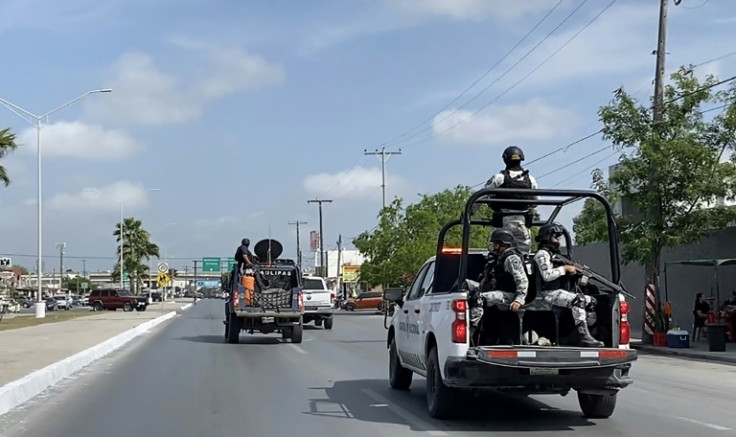What We Know About Kidnapping Of Four US Citizens In Mexico

Two US citizens have died and two others survived after they were taken captive by suspected drug traffickers after entering crime-ridden northeastern Mexico for medical reasons.
The two who lost their lives were identified by US media as Shaeed Woodard and Zindell Brown, and the survivors as Latavia Washington McGee and Eric James Williams, who was wounded.
Here is what we know so far about the kidnapping in the city of Matamoros in Tamaulipas state.
The four US citizens crossed into Mexico on Friday so that one of them could have a medical procedure, according to Mexican officials and relatives' interviews with US media.
Documents found in their vehicle indicated that "one of the Americans had come to undergo cosmetic surgery at one of the border clinics," Tamaulipas Governor Americo Villarreal said.
He rejected social media rumors that the victims worked for the US Federal Bureau of Investigation (FBI), saying: "There is no basis to believe that they have any relationship with the FBI."
While Mexico is a popular destination for medical tourism, the US government has warned against travel to Tamaulipas due to the risk of murder, kidnapping and other crimes.
The US citizens entered Mexico at 9:18 am (1518 GMT) on March 3 in a white minivan with North Carolina license plates.
Surveillance cameras recorded their journey through the streets of downtown Matamoros starting at 11:12 am.
Minutes later, they began to be followed, first by a sedan car and then by three pickup trucks.
At 11:45 am, the victims' minivan was intercepted by the three trucks and four armed men got out, camera footage showed.
Shortly after, three other cars arrived at the scene, including another pickup truck that the victims were put in, according to images posted on social media.
Initial indications were that the kidnapping was the result of a "mix-up" rather than a targeted attack, Tamaulipas Attorney General Irving Barrios said.
After being forced into the truck, the four Americans got out and tried to flee, but the kidnappers shot at them, according to the attorney general's office.
A 33-year-old Mexican woman died near the scene, possibly from a stray bullet, Mexican authorities said.
The abductors dragged the US citizens, some of whom were wounded, back into the truck, prosecutors said.
For three days after the kidnapping, the captives were taken to various places in the city, including a clinic, to "create confusion and prevent rescue efforts," Villarreal said.
Investigators visited at least six hospitals in the city without finding the missing US citizens.
The FBI offered a reward of $50,000 to anyone who provided information on the whereabouts of the abductees.
They were finally discovered -- two of them dead and two alive -- in a wooden house during a search operation in a neighborhood on the outskirts of Matamoros.
The two survivors, one of whom had a gunshot wound to the leg, were repatriated to the United States on Tuesday via a land border crossing.
The only suspect arrested on the spot was a 24-year-old man from Tamaulipas, identified as Jose Guadalupe "N," who was guarding the captives when the authorities arrived.
While there is no proof yet of his gang affiliation, the Gulf Cartel is known to operate in the area, according to Barrios.
The US ambassador to Mexico, Ken Salazar, also pointed to the Gulf Cartel, voicing concern about its control of the area.
The Gulf Cartel is one of Mexico's oldest and most powerful criminal groups, although it has lost territory and influence to its rivals, according to Insight Crime, a non-profit investigative organization.
© Copyright AFP {{Year}}. All rights reserved.





















